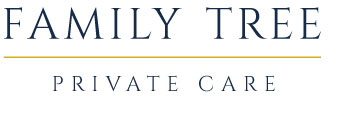10 Oct The Future of Senior Transportation
“Fee-for-service” is a payment model where services are unbundled and paid for separately. In healthcare, it gives an incentive for physicians to provide more treatments because payment is dependent on the quantity of care, rather than quality of care. For years, healthcare was stuck in a 100% fee-for-service model, but today, hospitals are starting to get paid based on the quality of care provided, as measured by hospital readmission rates (i.e., how long a patient stays healthy after leaving the hospital).
The frustration for hospitals is that 48% of all hospital readmissions are preventable, and these preventable patient readmissions cost U.S. taxpayers $17 billion every year. The financial penalties levied by Medicare on hospitals for readmissions exceeded $200 million in 2015 and $400 million in 2016. The demographic responsible for the vast majority of preventable readmissions include our most revered loved ones — the senior population.
This isn’t just about saving taxpayer dollars and avoiding financial penalties. This is about improving quality of life and health for our most vulnerable citizens – the elderly. Ineffective post-acute care is an epidemic, it is going to be a team effort to fix, requiring input from not just hospitals and doctors, but innovators, post-acute care providers (like Family Tree) and families. With an elderly population set to double in the next 25 years, we need to be smarter with our resources – The most expensive place to provide healthcare is the hospital setting, and the cheapest is in the home. Additionally, 9 out of 10 Americans want to age in place at home.
We need to work today to be able to provide high quality healthcare in the place where people want it and where it also happens to be the cheapest. Family Tree’s mission is to reduce unnecessary and preventable hospitalizations to change the way health is managed outside of the hospital setting for older adults. Our company has reimagined the future of healthcare, and we seek to reach our goals by working with institutions to help build a better model of care for our seniors.
What is Ride With Family Tree?
There are many tools in the toolbox to help fight unnecessary hospitalizations. Family Tree focuses on just a few of those tools, namely high touch services such as caregiving, nursing, patient advocacy, and transportation. We’re not a transportation company, so why focus on transportation? A significant contributor to causing preventable readmissions is a lack of access to reliable and cost-effective transportation. Up to 40% of seniors miss medical appointments due to a lack of transportation. Take Netflix for example – Today we have reliable and
A significant contributor to causing preventable readmissions is a lack of access to reliable and cost-effective transportation. Up to 40% of seniors miss medical appointments due to a lack of transportation. Take Netflix for example – Today we have reliable and cost effective access at our fingertips to every movie imaginable. Just 10 years ago we relied on trips to the local video rental store which had a limited selection at a relatively high cost. This is the world seniors live in today when trying to do something as simple as get to a doctor’s appointment.
So, Family Tree partnered with Uber to create Ride With Family Tree, a program that allows any person, even without a smartphone or app, to use a regular telephone to contact a live concierge to organize transportation. The concierge can orchestrate the entire process, even providing a caregiver or nurse to accompany the senior to a medical appointment. Ride With Family Tree is very simple, but very effective. It’s also a perfect example of how we can synergize technology, clinical expertise, and a soft touch to really change the lives of older adults.
Giving Seniors Independence
Just as important as mobility, older Americans are looking for freedom and flexibility. Having the freedom to drive ensures independence and serves to preserve identity and life-long routines. A driver’s license is the most widely accepted form of identification, so to give it up symbolizes a loss of freedom and independence. This is why on-demand transportation is so important to seniors. It’s about more than getting a ride – it’s about having the freedom to get a ride whenever you want to go somewhere, whether it be the grocery store, doctor appointment, or simply a trip to the latest art exhibit.
Independence is a sensitive subject with older adults, and their families know this. Most adult children are unwilling to talk to their parents about taking away the car keys – so much so that 40% of adult children say they’d rather discuss funeral arrangements with their parents than whether it is safe to drive themselves. Unfortunately, refusing to discuss the issues means that older adult’s make driving decisions for themselves with potentially fatal consequences How do we keep them safe and mobile without taking away their independence? Programs such as Ride With Family Tree, while not perfect for everyone, offer a wonderful solution.
Seniors and Technology
Getting seniors to adopt technology continues to be a struggle. More than half of older Americans haven’t engaged at all in the sharing economy, and only 42% of seniors own a smartphone. When you consider the rest of the population, nearly everyone has a smartphone. While this is slowly trending upwards, seniors are historically late adopters of technology. For seniors age 70+, or the silent generation as they’re called, life was different growing up and priorities are different today. Take the internet for example. While it’s opening up the whole world for some older adults, it’s usage among seniors age 75 and up is still significantly lagging.
There are some practical challenges for seniors. Many have physical challenges with manual dexterity or vision. Many others are skeptical about the benefits of technology. When almost 80% of seniors report needing help learning new technologies, there’s friction in that process that only high touch, not high tech, methods can ease. Ride With Family Tree leverages off the incredible technology of Uber and the marketplace of drivers, but masks the technology behind a channel much more familiar to older adults: the telephone.
Written by Daniel Gottschalk, President


